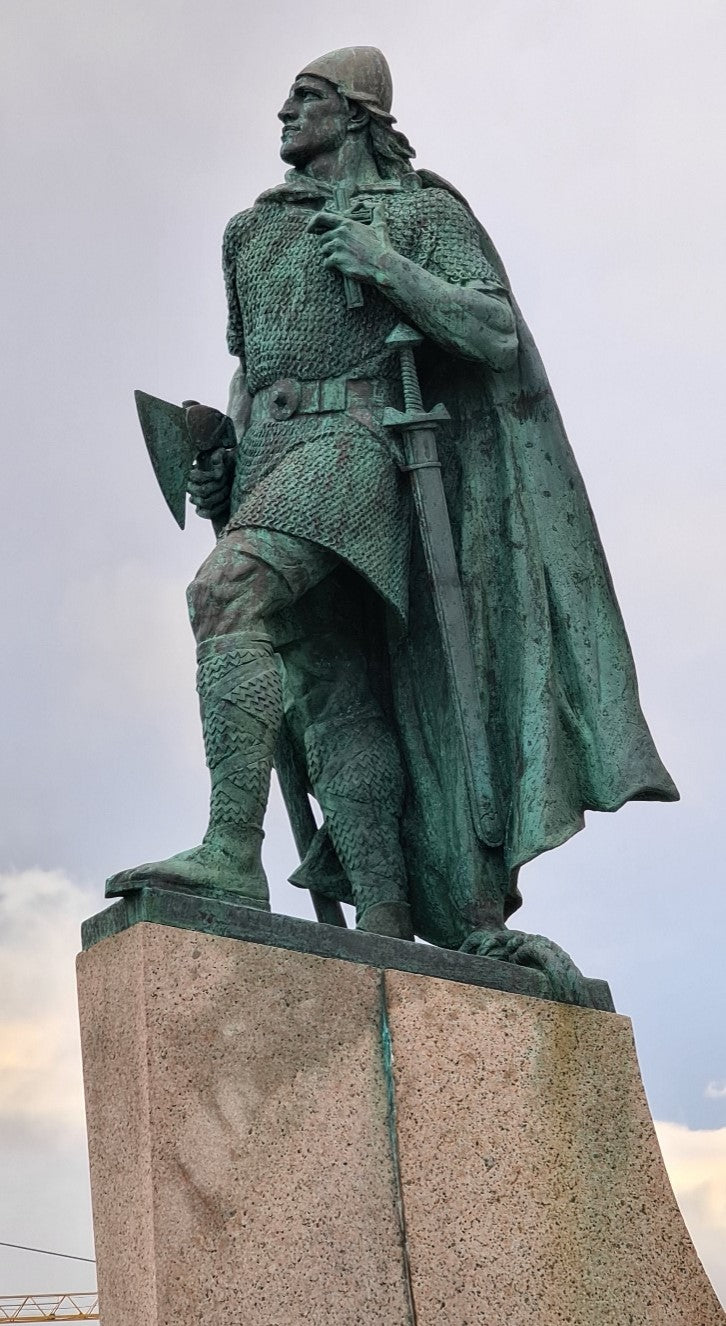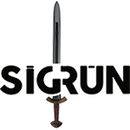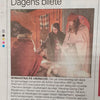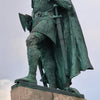Was Leifur Eiriksson Icelandic or Norwegian? The answer is...

A look at the Leifur Eiriksson statue in Reykjavik, Iceland
By Sigrun Bjork Olafsdottir
 The statue of Leif Eiríksson was made by an American sculpture by the name Alexander Stirling Calder. It was a gift from the US to Iceland to commemorate the 1000 years of the formation of Alþingi, or the Icelandic parliament as we know it and was given to Iceland in the year 1930. [1]
The statue of Leif Eiríksson was made by an American sculpture by the name Alexander Stirling Calder. It was a gift from the US to Iceland to commemorate the 1000 years of the formation of Alþingi, or the Icelandic parliament as we know it and was given to Iceland in the year 1930. [1]
The statue was selected by method of competition which Calder won. Another two of his better known statues are George Washington as president on Washington Square Arch in New /York and the Swann Memorial fountain in Philadelphia.
The statue is without doubt one of the best known landmarks of Reykjavik and shows one of the best known figures of Viking Age Iceland as Leifur became the first European to set foot in North America - in the year 1000 AD which makes it just around 500 years prior to Columbus. [2]
 The statue is surrounded by controversy from a great many angles and it is a cause of debate between Iceland and Norway as both countries make claims on Leif’s nationality. [3]
The statue is surrounded by controversy from a great many angles and it is a cause of debate between Iceland and Norway as both countries make claims on Leif’s nationality. [3]
Leifur’s father, Eiríkur Rauði - or Erik the Red as he is known in English, was a Norwegian man who was sentenced to outlawry from Norway. He went to Iceland where he settled (briefly) and where he met Leif’s mum - an Icelandic woman. Leifur was then born in Iceland around the year 980 AD where he grew up and lived until he moved to Greenland before setting sails to explore when he came up in Vínland (North America).
This may appear to be a pretty obvious case of Leifur being Icelandic and in fact, whilst writing this analysis, I conducted a survey on Facebook to see what nationality people generally would perceive a person to be if a person from country A, moved top country B, meets a person from country B and has a child with that person. The child being born and raised in country B and then moving to country C. 100% out of those responding answered that the person would be of nationality B. This however isn’t as simple as that. We are applying our current ideology of nationality to the logic behind our answer but back around the year 980AD when Leif was born, the people of Iceland and Norway didn’t define themselves as Norwegians or Icelandic. They all defined themselves as Norse as they saw themselves as one and they were more interested in making sure they were defined separately from the Danes and Swedes than from each other. So in order to be true to who Leifur was and how he himself would have seen himself, Iceland and Norway have to agree to share him as the son of both. Leifur was a Norseman. [4]
 When looking at the statue and how Leifur is shown, some questions arise. For one, he is shown as clean shaven. During the Viking age in Iceland, there are many references to how society would mock men without beards.[5] Beards were considered to be a sign of masculinity and strength. The men of Viking age Iceland took great pride in their hair growth and for the son of a fierce warrior not to have a beard would have caused embarrassment. Male grooming was in fact, a big deal. [6]
When looking at the statue and how Leifur is shown, some questions arise. For one, he is shown as clean shaven. During the Viking age in Iceland, there are many references to how society would mock men without beards.[5] Beards were considered to be a sign of masculinity and strength. The men of Viking age Iceland took great pride in their hair growth and for the son of a fierce warrior not to have a beard would have caused embarrassment. Male grooming was in fact, a big deal. [6]
The second part of the statue and how Leif is being displayed is that he is wearing chainmail (or brynja as it would have been called) whilst standing at the bow of a ship as he sails to Vinland. In the Viking age, it is pretty certain that only professional warriors and those of extreme wealth would have owned chainmail.[7] Leifur was neither. Also, if you only look at the logic in a man wearing a metal shirt whilst sailing, it doesn’t ring true. He is shown as wearing a short sleeve chainmail tunic in the style of habergeon, which was a sleeveless metal T-shaped tunic. [8] Even sleeveless, such garment would weigh around 12kg and explorers would not wear them when even warriors sailing to battle were known to leave them onboard the ships as they would weight them down, [9] The second logic as to why Leifur would not have worn chainmail whilst sailing to Vinland is that iron during the Viking age would rust.
Another notable detail from the statue is that in his left hand, Leifur clutches a cross. This could be quite significant and symbolic as Leifur was around during the transition time when Iceland took Christianity as its religion in the year 1000AD. [10] During that time, there was a great divide between pagans and Christians and Iceland found itself in a rather unique place where the Althingi (parliament) agreed to take up Christian religion but that paganism and certain rituals and cultures related to that would still be allowed. One such exception was that Icelanders would still be allowed to eat horsemeat. [11] The divide between people following the conversion was ripe within families as well as in the general society. Leifurs family was split in the middle and one of his better known siblings, Freydís was a known pagan and often referred to in a frightening, wild woman stance. [12] It is quite a subtle but a very strong message to add the cross to the statue as it is a symbol of Christianity arriving to America as early as just before the year 1000AD.
Leifur is also shown to hold a large axe in his right hand, something I have not been able to find reasoning for from the point of the sculpture and the choice of a weapon on one hand and a cross in the other raises questions if the artist was intending to show Leif as crusader of sorts or if perhaps this was to show his devotion to his religion that he embarked upon a journey into the unknown with his faith and his armour ready to take on what may come?
[1] https://en.wikipedia.org/wiki/Alexander_Stirling_Calder
[2] https://en.wikipedia.org/wiki/Leif_Erikson
[3] https://icelandmag.is/article/ten-fascinating-facts-about-statue-leifur-eiriksson
[4] https://en.wikipedia.org/wiki/Norsemen
[5] http://www.gutenberg.org/files/17919/17919-h/17919-h.htm#CHAPTER_XLIV
[6] https://www.telegraph.co.uk/men/fashion-and-style/11220712/Facial-hairs-formative-years-what-the-Vikings-and-Romans-did-for-male-grooming.html
[7] https://en.wikipedia.org/wiki/Viking_Age_arms_and_armour
[8] https://www.merriam-webster.com/dictionary/habergeon
[9] http://www.hurstwic.org/history/articles/manufacturing/text/viking_mail.htm#:~:text=Hurstwic%3A%20Viking%20Mail&text=Mail%20is%20a%20protective%20iron,left%20shows%20a%20modern%20reproduction.)
[10] http://www.handritinheima.is/sagan/sogusvidid/kristnitaka-islands.html
[11] https://repository.law.umich.edu/cgi/viewcontent.cgi?article=1204&context=articles
[12] https://en.wikipedia.org/wiki/Freyd%C3%ADs_Eir%C3%ADksd%C3%B3ttir
-
Posted in
Leif





